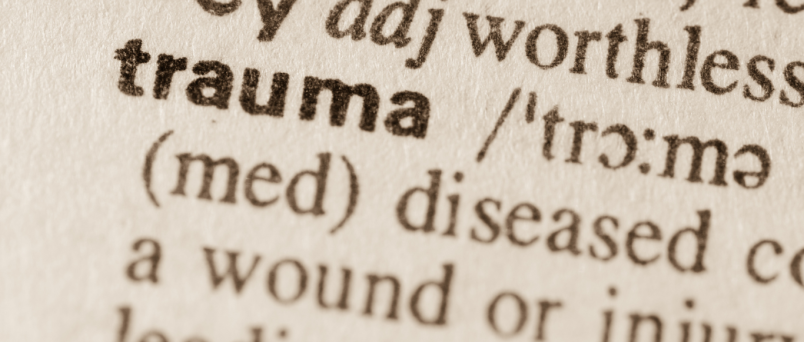Childhood Trauma and Addiction Recovery
Breaking the Cycle: How Childhood Trauma Fuels Addiction & The Path to Healing
Understanding the Link Between Childhood Trauma and Addiction
For many individuals struggling with addiction, the roots of substance abuse go much deeper than a desire for temporary escape. Research shows a strong correlation between childhood trauma and addiction recovery, with many people turning to drugs or alcohol as a way to self-medicate emotional wounds from their past.
In this post, we’ll explore the connection between childhood trauma and addiction, why it happens, and—most importantly—how to break the cycle and heal for long-term sobriety.
What is Childhood Trauma?
Childhood trauma refers to distressing experiences that occur during early development, often leaving lasting emotional and psychological scars. These experiences may include:
- Physical, emotional, or sexual abuse
- Neglect or abandonment
- Growing up in a household with addiction
- Divorce or parental separation
- Witnessing domestic violence
- Sudden loss of a loved one
- Living in extreme poverty or unsafe environments
- Experiencing bullying or social rejection
Trauma alters brain development, affecting stress responses, emotional regulation, and impulse control—factors that increase vulnerability to addiction later in life.
How Childhood Trauma Contributes to Addiction
The connection between trauma and addiction is well-documented. According to studies on Adverse Childhood Experiences (ACEs), individuals who experience childhood trauma are 5 times more likely to develop a substance use disorder. Here’s why:
1. Self-Medication for Emotional Pain
People who experience trauma often struggle with chronic stress, anxiety, depression, and PTSD. To numb emotional pain, they may turn to substances like alcohol, opioids, or stimulants. These provide temporary relief but ultimately create a cycle of dependency.
2. Changes in Brain Chemistry
Early trauma affects the brain’s dopamine system, which regulates feelings of pleasure and reward. This can lead to an increased craving for substances that produce artificial dopamine spikes, reinforcing addiction pathways in the brain.
3. Difficulty with Emotional Regulation
Trauma survivors often have trouble managing emotions, making them more susceptible to impulsive behavior and poor coping strategies—both of which contribute to addiction.
4. Low Self-Worth & Negative Core Beliefs
Many individuals who experience trauma develop deep-seated feelings of shame, unworthiness, or guilt. This emotional burden can drive them to substances as a way to escape negative self-perceptions.
5. Environmental Influence
If addiction was present in the home environment, it normalizes substance abuse as a coping mechanism, increasing the likelihood of repeated patterns.
Breaking the Cycle: How to Heal from Trauma in Sobriety
Healing from childhood trauma while maintaining sobriety requires intentional effort, professional support, and self-compassion. Here are key steps to breaking the trauma-addiction cycle:
1. Seek Trauma-Informed Therapy
Not all therapy is created equal. Trauma-informed therapists specialize in helping individuals process painful memories safely and effectively. Approaches like:
- Cognitive Behavioral Therapy (CBT) – Helps challenge negative thought patterns.
- Eye Movement Desensitization and Reprocessing (EMDR) – Effective for PTSD and trauma recovery.
- Dialectical Behavior Therapy (DBT) – Teaches emotional regulation skills.
2. Build a Support Network
Overcoming trauma and addiction isn’t meant to be done alone. Surround yourself with positive, understanding people, including:
- Support groups like AA or NA
- Sober communities
- Friends and family who respect your recovery
3. Learn Healthy Coping Mechanisms
Replacing harmful habits with positive coping mechanisms is essential for long-term sobriety. Consider:
- Exercise (yoga, running, weightlifting)
- Journaling or creative outlets (art, music, writing)
- Meditation & mindfulness (deep breathing, guided meditations)
- Engaging in hobbies that bring fulfillment
4. Address Underlying Mental Health Conditions
Many trauma survivors struggle with anxiety, depression, or PTSD. Seeking professional help for dual-diagnosis treatment (addressing addiction and mental health together) improves recovery outcomes.
5. Establish a Routine for Stability
Creating structure in daily life reduces stress and strengthens sobriety. Focus on:
- Regular sleep schedule
- Healthy eating habits
- Setting realistic goals for personal growth
- Accountability check-ins with sponsors or mentors
6. Forgive Yourself & Practice Self-Compassion
Healing is a long-term process, and setbacks happen. Learning to forgive yourself and approach recovery with kindness rather than guilt is key to lasting sobriety.
The Role of Sober Living Homes in Trauma Recovery
At Revival Sobriety Homes, we understand that overcoming addiction is more than just quitting substances—it’s about healing the wounds that led you there. Our trauma-informed approach provides a safe, structured, and supportive environment where individuals can work through their past while building a strong foundation for their future.
What We Offer:
✔ Trauma-informed care with professionals who understand addiction recovery
✔ A safe, judgment-free environment for healing
✔ Peer support and community-focused living
✔ Resources for therapy, job readiness, and personal growth
✔ A structured lifestyle to promote stability and accountability
Final Thoughts: Hope is Within Reach
Breaking free from addiction caused by childhood trauma is challenging but possible. With the right support, tools, and mindset, you can heal, grow, and build a fulfilling, sober life.
If you or a loved one is struggling with addiction and needs a safe, supportive sober living environment, contact Revival Sobriety Homes today. Healing starts with a single step—let us walk this journey with you.
📞 Call us at 805-709-9090
🌐 Contact Revival Sobriety Homes for More Info


